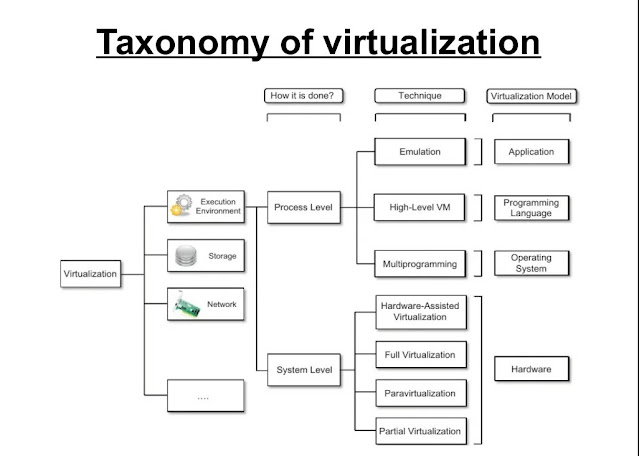What are the characteristics of virtualized environments?
Characteristics of virtualized environments
- Virtualization is a broad concept that refers to the creation of a virtual version of something, whether hardware, software environment, storage, or network. In a virtualized environment there are three major components: guest, host, and virtualization layer. The guest represents the system component that interacts with the virtualization layer rather than with the host, as would normally happen. The host represents the original environment where the guest is supposed to be managed. The virtualization layer is responsible for recreating the same or a different environment where the guest will operate. (see fig below)
- These environments support different applications and then implementation of Virtualization Technology. The most intuitive and popular is Hardware Virtualization, which also constitutes the original realization of the Virtualization Concept.
- Here in Hardware Virtualization Guest is represented by a system image which is comprised of an operating system and installed applications. These are installed on top of virtual hardware that is controlled and managed by the virtualization layer, also called the virtual machine manager. The host is instead represented by the physical hardware and in some cases the operating system, which defines the environment where the virtual machine manager is running.
Three major Components falls under this category in a virtualized environment:
1. GUEST:
The guest represents the system component that interacts with the virtualization layer rather than with the host, as would normally happen. Guests usually consist of one or more virtual disk files, and a VM definition file. Virtual Machines are centrally managed by a host application that sees and manages each virtual machine as a different application.
2. HOST:
The host represents the original environment where the guest is supposed to be managed. Each guest runs on the host using shared resources donated to it by the host. The operating system, works as the host and manages the physical resource management, and the device support.
3. VIRTUALIZATION LAYER:
The virtualization layer is responsible for recreating the same or a different environment where the guest will operate. It is an additional abstraction layer between a network and storage hardware, computing, and the application running on it. Usually it helps to run a single operating system per machine which can be very inflexible compared to the usage of virtualization.
OR,
The characteristics of virtualized environments
- In a virtualized environment there are three major components: guest, host, and virtualization layer.
- The guest represents the system component that interacts with the virtualization layer rather than with the host, as would normally happen.
- The host represents the original environment where the guest is supposed to be managed.
- The virtualization layer is responsible for recreating the same or a different environment where the guest will operate in the case of hardware virtualization, the guest is represented by a system image Compromising an operating system & installed application
- These are installed on top of Virtual hardware that is controlled & managed by the Virtualization layer also called the Virtual machine manager




Comments
Post a Comment